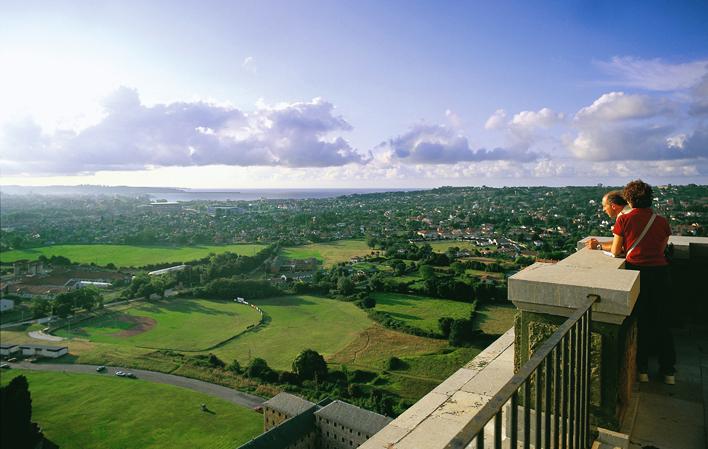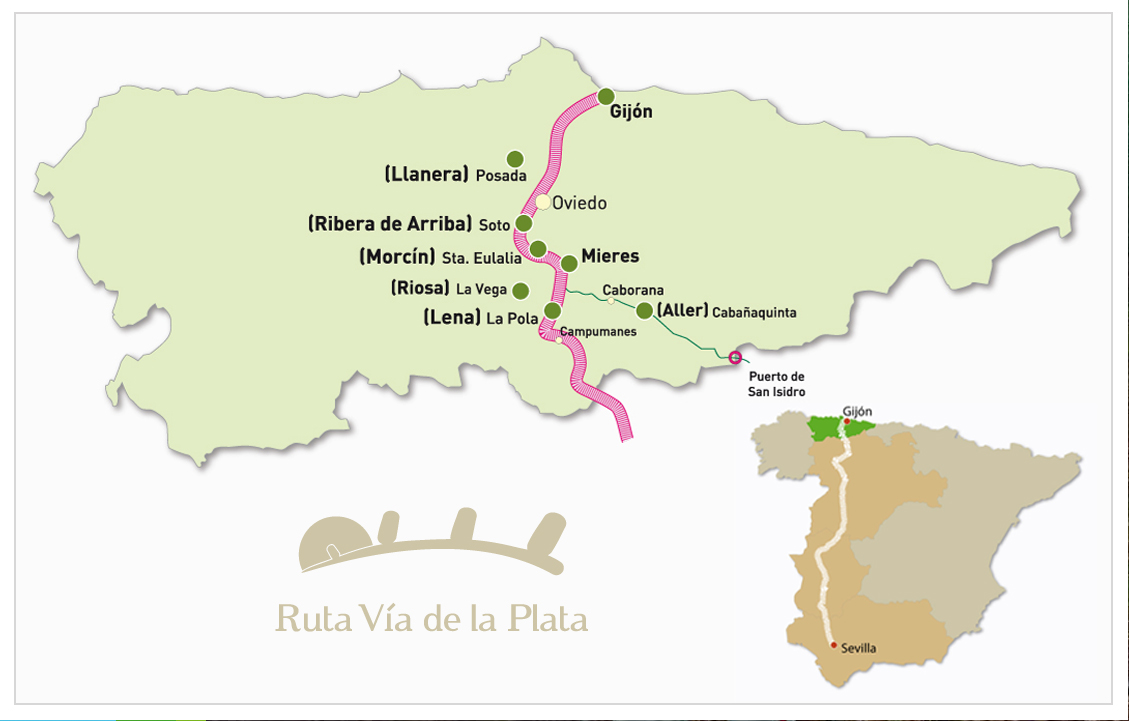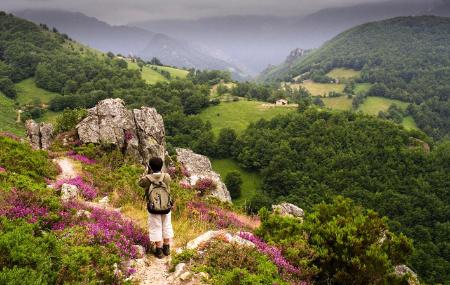
Vía de la Plata Route
- Title comarca Gijón, Comarca del Nora and Montaña Central
- Address Address: Pza. Fermín García Bernardo. 33201 Gijón/Xixón, Asturias Centre, Gijón
- Km Km: 76
- Phone Phone: 985 185 189
- Email Email: info@rutadelaplata.com
- Site Site: https://rutadelaplata.com/
Info

A road named after a Roman general, the Roman baths and the Roman wall of Gijón/Xixón, the Roman villa of Veranes, the Roman bridge of Cangues d' Onís/Cangas de Onís, gold mining in western Asturias, the Roman camp of La Carisa.... and so many other references from our collective heritage, in addition to the intangible socio-linguistic and cultural aspects... show us that this Roman footprint is wide and deep, and what is more interesting, that the contemporary traveller can trace it and enjoy it.
The Empire stood out for its logistical capacity for the development of infrastructures in civil engineering and construction. In fact, the Romans laid out the first 'highways' of the ancient world in Western Europe, and Hispania was no exception. They used old roads or routes that others had used in previous centuries as a reference point to reach the north of the Iberian Peninsula. A north that was difficult for the Roman legions to advance into, in which Asturias was to be found: rugged, green, rich, strategically valuable and of unexpected and virginal beauty.
No more and no less than this was the panorama that the powerful Roman troops encountered in their unstoppable territorial advance, and thus was born a great communication route that linked the Cantabrian coast with the lands of southern Hispania, a great Roman road that entered Asturias through the Via Carisa, named after the Roman general who promoted it - named Publius Carisius -, and whose objective was to link the military settlements in the lands of Leon with the Cantabrian Sea. Publius Charisius achieved his dream and his 'legios' bathed in the Bay of Biscay. The emperors Augustus, Trajan and Hadrian also fulfilled theirs: that primitive road and its natural extensions would be one of the busiest in the whole Empire and through it passed not only soldiers, but also merchandise, traders, travellers and with them the culture, the language and, in short, the Roman essence?
The Empire ended, but the dream of communication between cultures survived and throughout the Middle Ages, the Modern and Contemporary Ages the road continued in use, and it was travelled by the Arabs - who called it the Silver Route - and also by the Christians, and so on for centuries and centuries until today, when the Silver Route is one of the most important European cultural itineraries on the continent, together with the Way of St. James.
In Asturias there are many places, landscapes, activities and moments of leisure that can be enjoyed in the surroundings of the Route,as well as the satisfaction of travelling a route full of history and experiences, recreating the dream of those who built an Empire and one fine day found that to advance towards the north, and reach a coastline of impossible cliffs and a rough, blue sea, they had to cross a land as green as an emerald, fertile as a biblical metaphor, of brave, noble and rebellious people who today investigate, show and live their Romanisation period as one of the most interesting in their history?
An approach to the Silver Route in Asturias takes us to places such as Lena, Aller, Mieres, Riosa, Morcín, Ribera de Arriba, Llanera and Gijón, a city which is the northernmost point of this Roman route, which in its southern part begins in Seville (Andalusia) and passes through Extremadura, and Castile and León, until it reaches the Natural Paradise.
What to see
In Gijón:
- The City of Gijón/Xixón (Cimavilla, city centre, San Lorenzo beach).
- Laboral City of Culture.
- Botanical Garden/Aquarium.
- Network of Archaeological Museums.
In Llanera:
- La Morgal aerodrome and 'Fernando Alonso' circuit.
- San Cucao Castle.
- Palace of Villanueva.
- Villabona Palace House.
In Ribera de Arriba:
- The village of Güeñu/Bueño, Exemplary Village of Asturias.
- The Hórreo Interpretation Centre in Güeñu/Bueño.
- The Peñerudes Mountains.
- The Argame Mountains.
In Morcín:
- The Exemplary Village of La Foz.
- The chapels of Monsacro.
- The Aramo Mountains.
- The Medieval Tower of Peñerudes and the reservoir of Los Alfilorios.
In Riosa:
- The Angliru.
- The Protected Landscape of the Sierra del Aramo.
- The mining village of Rioseco.
- The Water Route from the Aramo tunnel to the village of Llamo/L.lamo.
In Mieres:
- The village of Mieres del Camín - Plaza de Requejo.
- Cuna and Cenera Valley.
- Mining village of Bustiello.
- Cuencas Mineras Protected Landscape.
In Aller:
- Via Carisa.
- The Central Mountain Cycle Ring.
- Coto Bello Pass.
- The Fuentes de Invierno ski resort.
In Lena:
- Santa Cristina de Lena.
- Valgrande-Pajares Ski Resort.
- Las Ubiñas-La Mesa Nature Reserve.
- Cuitu Negro and La Cobertoria mountain passes.
Destinations on the Silver Route
GR-100




